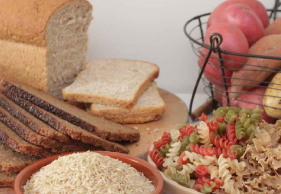I’m training for my first Ironman 70.3 and have recently developed a painful Achilles when swimming. The pain starts with a burning sensation in my lower calf and moves down towards my Achilles during the session. It only happens when I’m swimming and is usually worse after I’ve had a hard bike session. What causes this and how can I treat and prevent it? – SANDRI HOUGH, SUNNINGHILL
ANSWER
We all welcome you and commend you for starting this journey. Let’s get the medical jargon out of the way. The Achilles tendons connect the calf muscle to the heel and are used extensively during all three disciplines. Achilles tendonitis (inflammation of the Achilles tendons) is a chronic injury that occurs primarily from overuse. It tends to come on gradually over time until pain is constant and exercise too painful to continue.
Your problem probably originates from cycling more than swimming because the pain is worse after a hard bike session. Pain in the Achilles usually indicates a problem in pedalling technique, where the saddle is set too high and forces the cyclist to point the toes excessively to reach the bottom of the pedal swing. Having your cleats set too far forward, or otherwise pedalling with your toes can also cause it. The farther forward the contact between the foot and the pedal, the greater the stress on the Achilles tendons.
The main reason why you’re feeling it mostly during swimming is because your feet are plantar flexed (toes pointed down) during swimming, causing the calf muscles to be under constant contraction and under tension the whole time.
As a guideline, more information or an assessment is needed, as many contributing factors still need to be taken into account for a more accurate diagnosis, but these are my recommendations.
• The body needs to work together in equilibrium, instead of through imbalances and overcompensations. Get your calves checked out to eliminate chances of muscle tears or any other damage – if there isn’t any damage you should follow a conditioning programme to strengthen weaker muscles, like your calves, to help take strain off your Achilles tendons.
• Instead of focusing on stretching your calves after cycling, stretch your quadriceps.
• Do a proper bike set-up and get a professional to analyse your pedalling stroke. Also focus on lighter gears and cycle at a higher cadence.
• Make sure you haven’t started training too much, too soon, and that you’re properly hydrated during training and events.
Modern Athlete Expert
ANDRIES LODDER
Biokineticist at the Technogym Wellness Centre in Fourways, Johannesburg, lecturer in exercise science and Ironman finisher. Andries specialises in sport and orthopaedic rehabilitation and sport-specific testing and conditioning. (www.topbio.co.za)
Running on Empty
I find myself completely exhausted by the end of a training week and have to force myself to go running most Thursday afternoons. How can I improve my energy levels throughout the week? I take all the prescribed rest days and usually train in the afternoon after work. – JANINE THOMAS, DURBAN
ANSWER
Most of my clients who suffer with low energy levels or exhaustion are either over-trained or depriving themselves of carbohydrates. Since you say you are taking the required rest, it’s more than likely your diet is the culprit for your fatigue.
Carbohydrates are the main fuel for the human body. Without them you cannot exercise and about 50% of your diet should be coming from carbs. This is especially true for active people. Your body cannot exercise at high intensity without glycogen, the storage form of carbs in your liver and muscles. Between your liver and your muscles, you have enough storage space for about 500g to 1kg of glycogen, only about 30 to 90 minutes of fuel depending on your intensity of exercise. Once your glycogen levels run out, you begin to feel tired and ‘hit the wall.’ So it is vital to make sure you refuel your muscles and liver as optimally as possible.
The best way to do this is by consuming carbs (and a small amount of protein) within an hour after exercise, as this is when your body is geared to replenish those lost glycogen stores. If you don’t consume carbs immediately, it generally takes much longer for glycogen restoration to occur.
Your training programme probably kicks off after a day’s rest, meaning your glycogen stores have had time to top up, so running on day one feels great. However, if you don’t replenish your muscles with carbs sufficiently after training, as well as during the next 24 hours, you are more than likely starting the next day’s run with sub-optimal glycogen stores. You may be able to cope with this lower fuel level for day two, but every day you’re further depleting your glycogen stores and never properly topping them up. This means that by day four (Thursday afternoon), your glycogen stores could be less than half full, leaving you feeling exhausted.
I would suggest you follow a healthy balanced eating plan throughout the day, making sure you eat enough low GI (slow energy-releasing) carbs spread out in three meals and three small snacks. Then make sure you eat within 40 minutes after your run in the afternoon.
 Modern Athlete Expert
Modern Athlete Expert
CHRISTINE PETERS
Registered Dietician at Sunninghill Medical Centre, Johannesburg. Member of Morningside Country Club with eight years’ running experience, including one Comrades finish and three ultra and two half marathon finishes at the Two Oceans Marathon.



